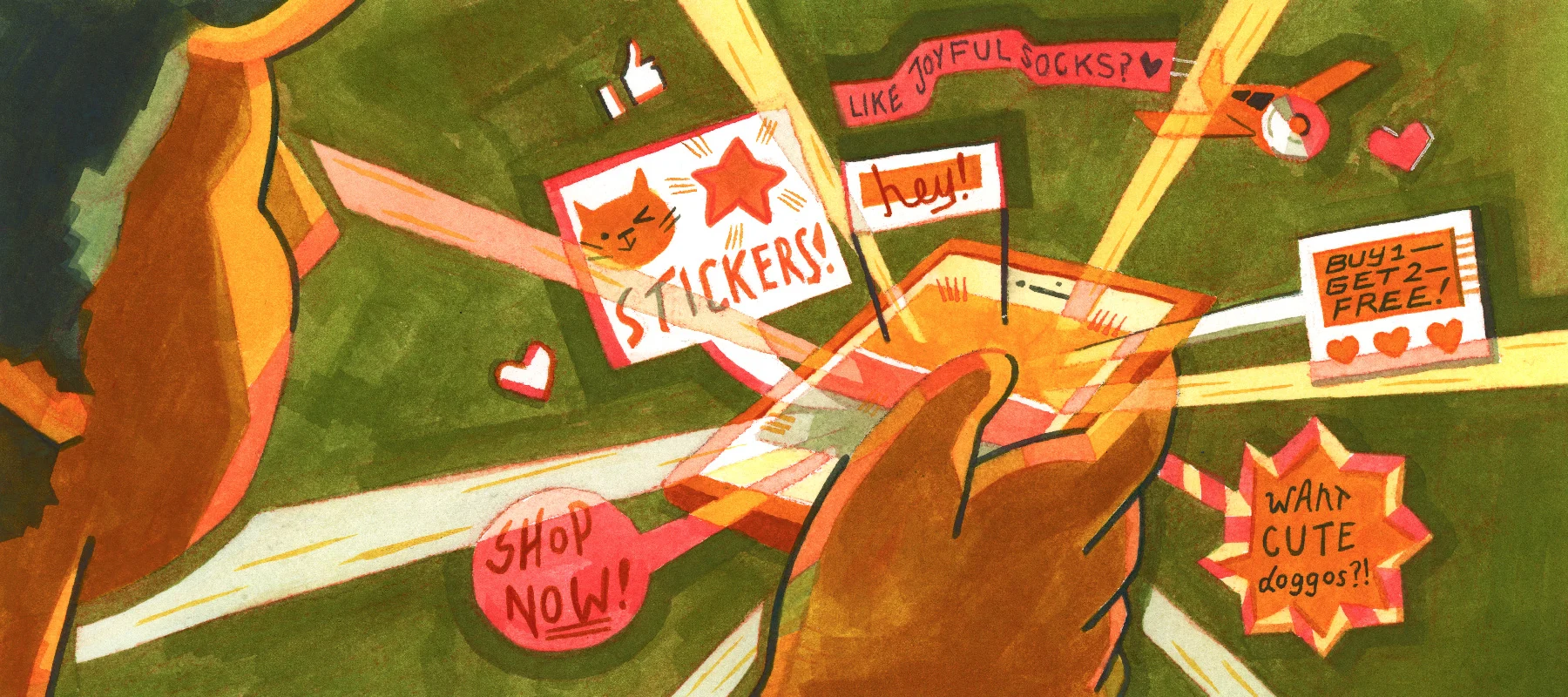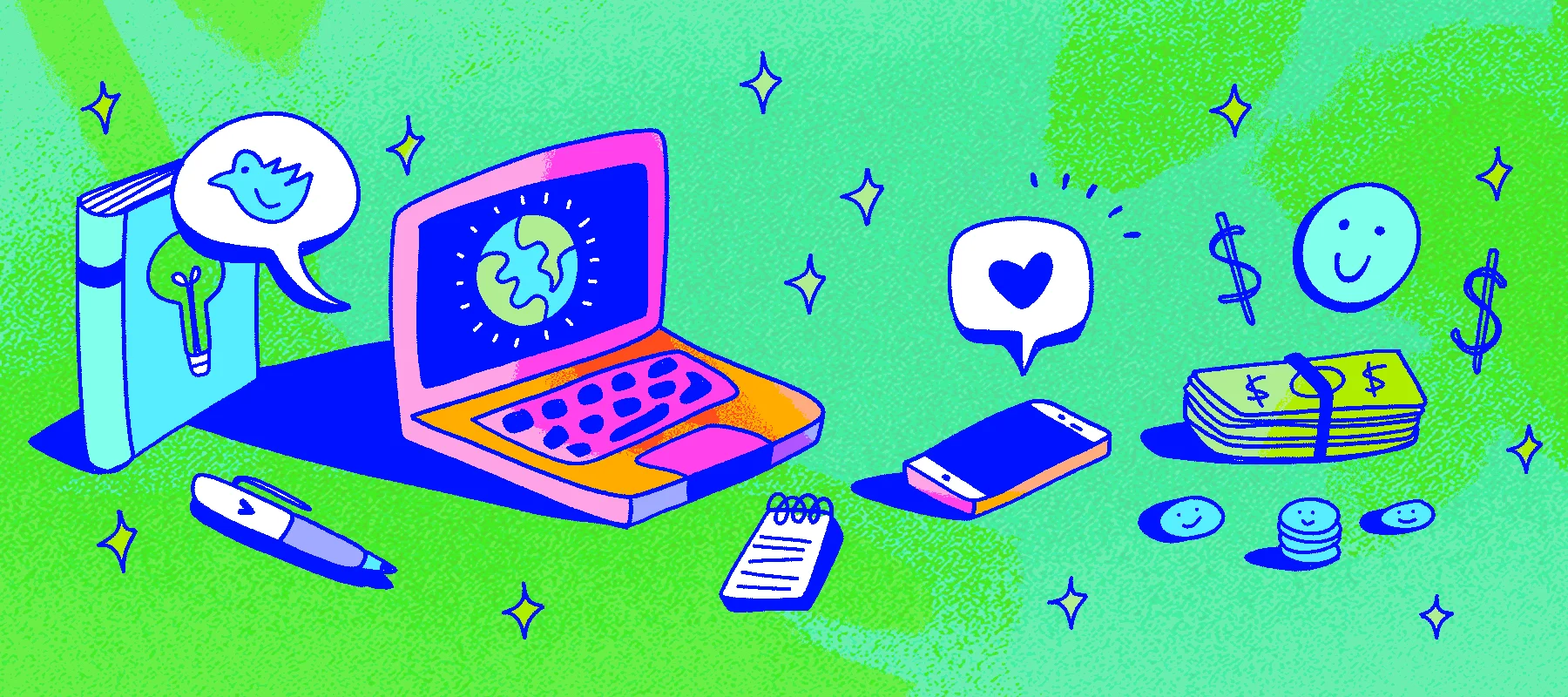Should You Pay for Customer Attention?
- 24 June 2021
- ByJamie Gadette

The term “pay to play” kind of makes my skin crawl. It reminds me of “payola,” which dominated commercial airwaves in the ‘70s and continues today in more insidious forms via major record label and corporate conglomerate loopholes. Basically, someone or something provides financial incentive (or good old-fashioned strong-arming) in exchange for airplay. This is why you tend to hear the same 15 songs on most FM stations over and over and over again.
But pay-to-play, a.k.a. paid media, can actually be a very positive, very non-gross way to get the right people to your shop.
Why not just rely on organic social, which is (seemingly) free?
Well, consider how challenging it’s become in recent years to connect with customers on Facebook, for example. When the tech giant changed its algorithms to prioritize family and friend interactions (really, to increase ad revenue), organic reach plummeted for businesses of all sizes.
If you believe that time equals money, the hours you invest in organic social media versus the dollars you might put into paid media, the latter seems like a pretty good option. Of course, as with any marketing tactic, you need to do your homework before you take the leap.
Cherry-pick your channels
According to Marty Foy, Growth Marketing Manager at GAN.CO which helps startups grow and build their businesses with human and financial capital, paid media is basically any platform, person, or plan that leverages someone else's audience to put your products in view. That means everything from digital and social ads to influencer partnerships. Unlike earned media, which includes sending press releases to publicists or journalists, you have much more control over how, when, and where your message is communicated to exactly who you want to reach.
Facebook, Instagram, and Google are the obvious go-tos for media placements, but they certainly aren’t the only options—nor are they right for everyone.
“I'd be judicious with these platforms because they usually drive a lot of impressions but not a lot of conversions,” says Foy. “That's the rub. They make it easy to buy their advertising products but sometimes really screw the pooch in delivering a return for makers/artists needing new customers. They're great platforms if you buy media for an insurance company but not if your product group is bespoke and your customers' taste is nuanced and specific.”
Stephen Gebhardt, co-founder of apparel brand and media company, RSVLTS, thinks both earned and paid media can be hyper effective and are “especially powerful when done in tandem, which is why it’s always important to have a sound media strategy before launching any campaign,” he says. “Weigh the pros, cons, and even feasibility of using paid tactics. You can get super detailed or do a simple SWOT (Strength, Weaknesses, Opportunities, Threats) analysis to see what makes sense, because it’s really important to look at all potential angles, outputs, and outcomes before one dives into a tactic such as running digital ads that might not give you a good return on dollars spent.”
Nail down your budget
Before you invest in any paid media platform, do an honest cost-benefit analysis. How much do you really want to spend?
“Start with your COG (cost of goods), add up your time and effort, shipping, packaging, and other costs, and get a sense of your margin for your main products,” says Foy. “Really get to know the margin you make on your product group. Then, work backward from your margin, which will guide you to decide if you should invest your time, money, and effort into a paid media program that is sustainable and most importantly, replicable.”
It might sound obvious, but not everyone runs the numbers as thoroughly as you should. “Most people just want to sell a certain amount but they need to know what the cost was to make the product, their time invested, what the product sells for, and how much they paid to get that sale,” says Jillian White, a media director who helps both traditional and digital buyers with media placements.
Foy agrees, adding many artists understandably care more about the work itself than the dollars behind it. And there are plenty of vendors who will pounce at the chance to profit off of anyone playing fast and loose with their budget.
“In my experience, many makers have little insight into the financial costs, labor, and emotional investments they put into their products,” he says. “Paid media campaigns can quickly eat into your margin, making any effort feel like a kick in the shorts if you lose your shirt.”
Once you’ve established your budget, strategy, and tools of choice, take time to tailor your messaging and imagery. “Don't oversell, but show why your product is right for the consumer,” says White. “Too often I see posts but don't know what they are selling me or what I am supposed to do.”
Put yourself in your customers’ shoes. What would catch your interest? Why should you engage with the sponsored content? Be clear and direct about what you’re offering.
Find your people
Reach out and partner with someone. That might mean other brands, artists, companies, non-profits, or even celebrities that are relevant to your mission.
“I lament using this word, but there is a whole wide world of social influencers who can promote you and your art to audiences that care deeply about supporting makers. Let your intuition guide you to the people and online places that reflect you and the things you value,” says Foy. “Their reach and audience follow them for a reason.” If the collaboration makes sense, go for it! Cool things could follow.
Of course, when it comes to partnerships, it’s totally possible to skip paid media altogether.
For example, last year, RSVLTS found a kinship with the NBA after sending masks to top players, including Giannis Antetokounmpo and Lebron James, who wound up wearing them on a daily basis on national TV and Instagram.
“This cost us the price of a mask, postage, and a few hours of research for addresses,” says Gebhart. “Sometimes the best branding campaigns are the ones that cost the least amount of money. You just need to find a strategic and authentic way to reach your audience.”
Article header image created by illustrator Yuko Okabe.
24 June 2021
Words by:Jamie Gadette
Tags
- Share

